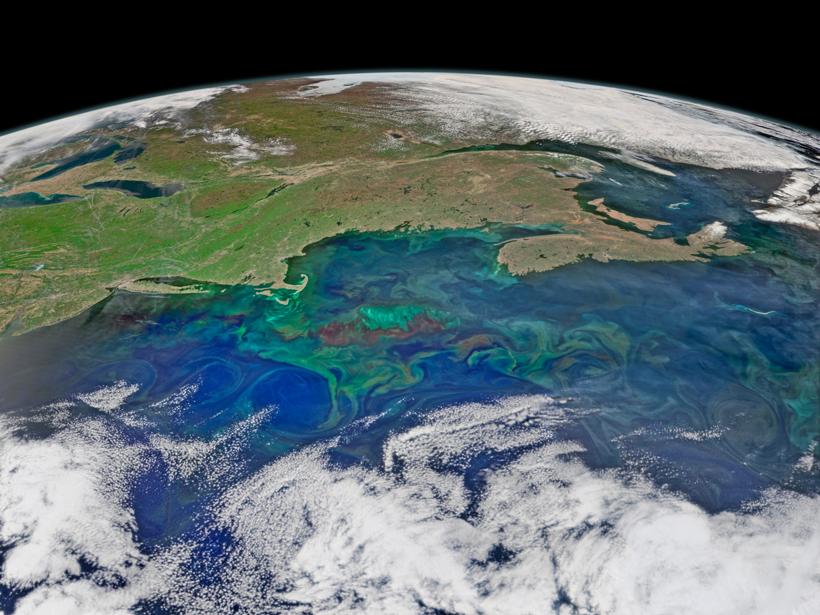Source: Journal of Geophysical Research: Biogeosciences
The flow of dissolved organic carbon (DOC) from land to sea typically accounts for a small fraction of an ecosystem’s carbon budget compared with processes like photosynthesis and respiration. However, changes in DOC export from an ecosystem can give scientists insight into the sensitivity of carbon budgets to climate change. Previous research has found that hydrologic processes like runoff may have a greater effect on DOC export than changes in temperature, land use, or land cover. Here Huntington et al. measured how climate change alters hydrologic conditions in New England and affects DOC transport into the Gulf of Maine.
Roughly 3000 cubic meters of water drain into the Gulf of Maine every second from the region’s watershed, and 90% of the organic carbon carried by rivers in the northeastern United States is DOC. The team measured DOC export sensitivity in relation to only runoff, which increased in northern New England throughout the 20th century. Climate models predict that the trend will continue throughout the 21st century.
The researchers calculated DOC export from 1950 to 2013 for 20 rivers that flow into the Gulf of Maine and from 1930 to 2013 for 14 rivers. They also predicted DOC export for the 21st century for three rivers, the Penobscot, Kennebec, and Androscoggin, which drain nearly half the area of Maine. The climate projections for future DOC predictions were based on coupled atmosphere-ocean general circulation models from the U.K. Met Office Hadley Centre (HadCM3) and the U.S. Department of Energy/National Center for Atmospheric Research Parallel Climate Model (PCM) under two emissions scenarios.
The team found that for half of the 20 rivers with data going back to 1950, DOC export significantly increased during the winter. The same was true for 13 of the 14 rivers with data going back to 1930. There was, however, significant variability in DOC export from year to year for each river; wintertime DOC export from the Penobscot River, for example, varied by a factor of 5 throughout the study period. Still, the annual DOC export across the region generally increased from 1930 to the 1970s, then decreased until the 1990s, before rapidly rising again through 2013.
The climate projections predicted larger increases in temperature but smaller increases in precipitation over the 21st century compared with the 20th. According to the team, this suggests that annual DOC export will likely continue to rise throughout the 21st century but not quite as rapidly as it has in the past.
Although the current study is limited by the fact that the authors looked only at runoff and held other variables such as land cover constant, the results could be relevant to other regions that are likely to experience precipitation increases in a warming world. In addition, DOC can influence algal blooms, phytoplankton productivity, and carbon sequestration in coastal waters, so understanding fluxes in DOC transport into the ocean is critical for evaluating its effects on coastal food webs. (Journal of Geophysical Research: Biogeosciences, https://doi.org/doi:10.1002/2015JG003314, 2016)
—Kate Wheeling, Freelance Writer
Citation:
Wheeling, K. (2017), How climate change affects the flow of carbon from land to sea, Eos, 98, https://doi.org/10.1029/2017EO067539. Published on 14 February 2017.
Text © 2017. The authors. CC BY-NC-ND 3.0
Except where otherwise noted, images are subject to copyright. Any reuse without express permission from the copyright owner is prohibited.

